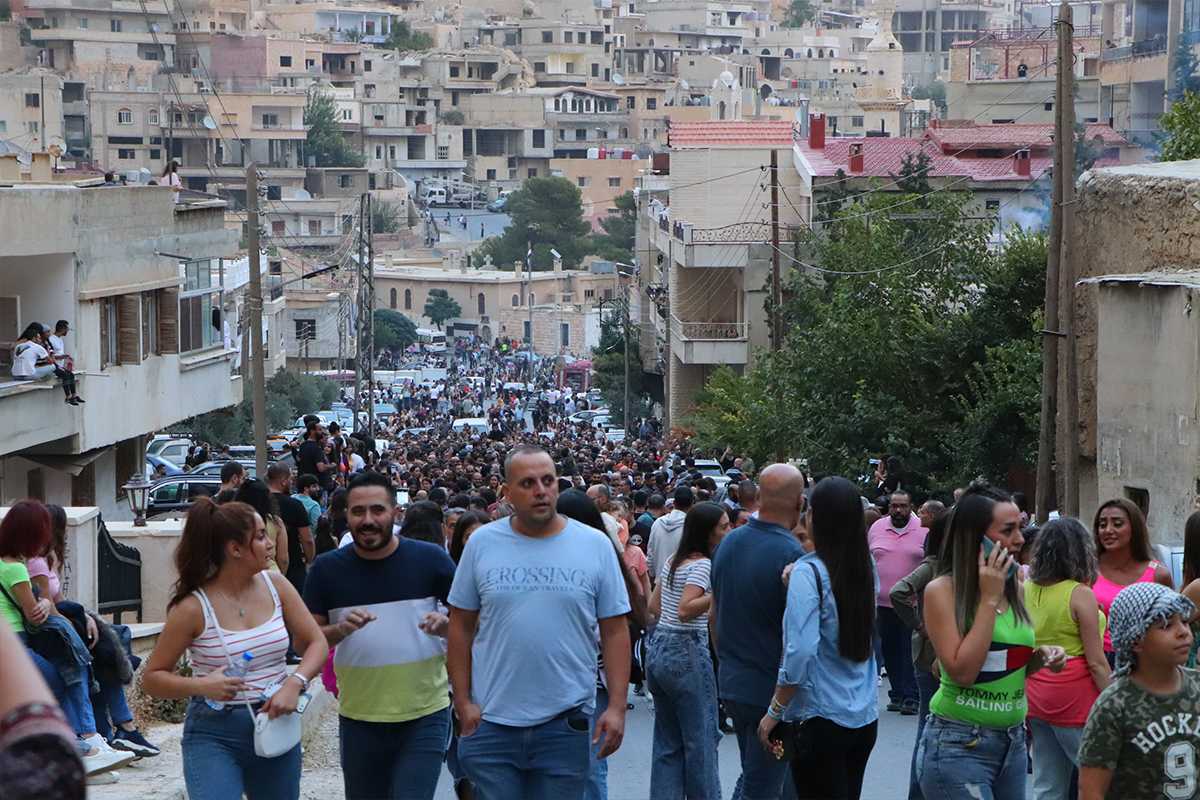Nestled in the majestic Qalamoun Mountains of Syria, Maaloula is one of the last places in the world where the ancient Aramaic language—the language spoken by Jesus Christ—is still alive. This village offers a rare window into the past, a place where history, religion, and culture blend to create an unforgettable experience for pilgrims and travelers alike. In this article, we’ll explore the rich heritage of Maaloula and why it deserves a spot on your travel list.
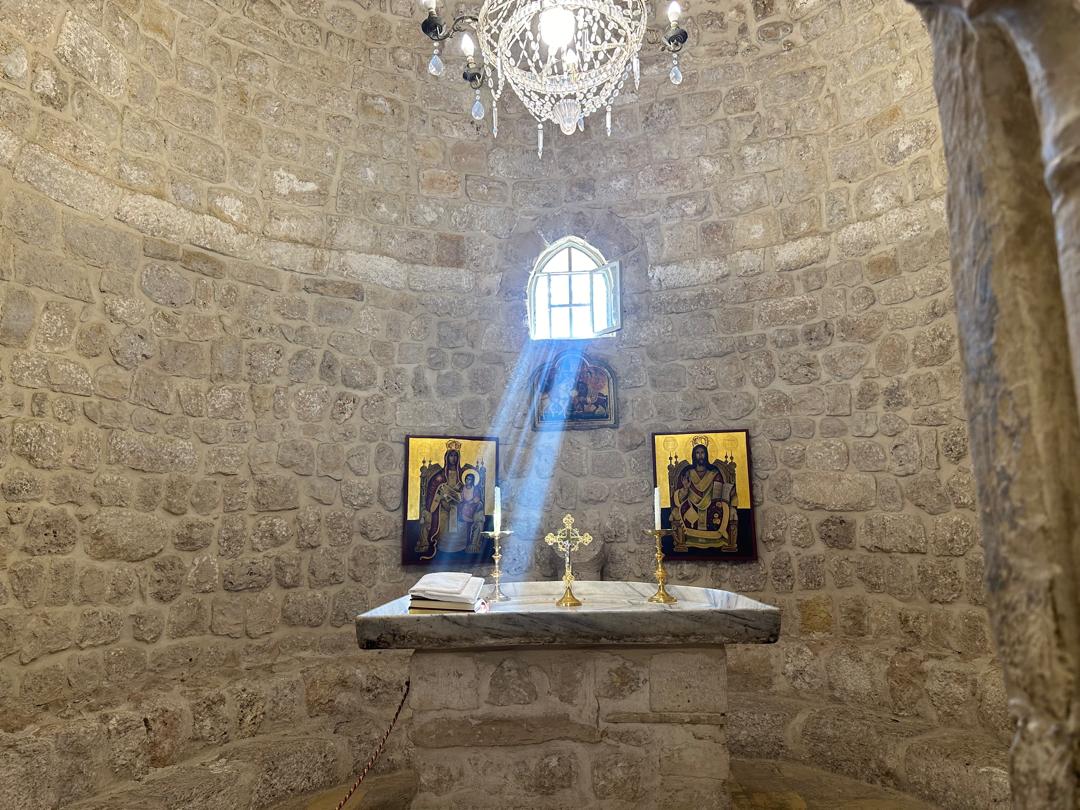
One of the Last Places Where Aramaic is Spoken
Imagine visiting a place where the language of Jesus Christ is still spoken today. That place is Maaloula. Aramaic, once a dominant language in the Middle East, has largely disappeared over the centuries. But in Maaloula, around 5,000 residents still speak this ancient tongue. This living connection to biblical times is not just a historical relic—it’s part of the daily life of Maaloula’s residents. Some even recite prayers, including the Lord’s Prayer, in Aramaic, preserving a direct link to the past.
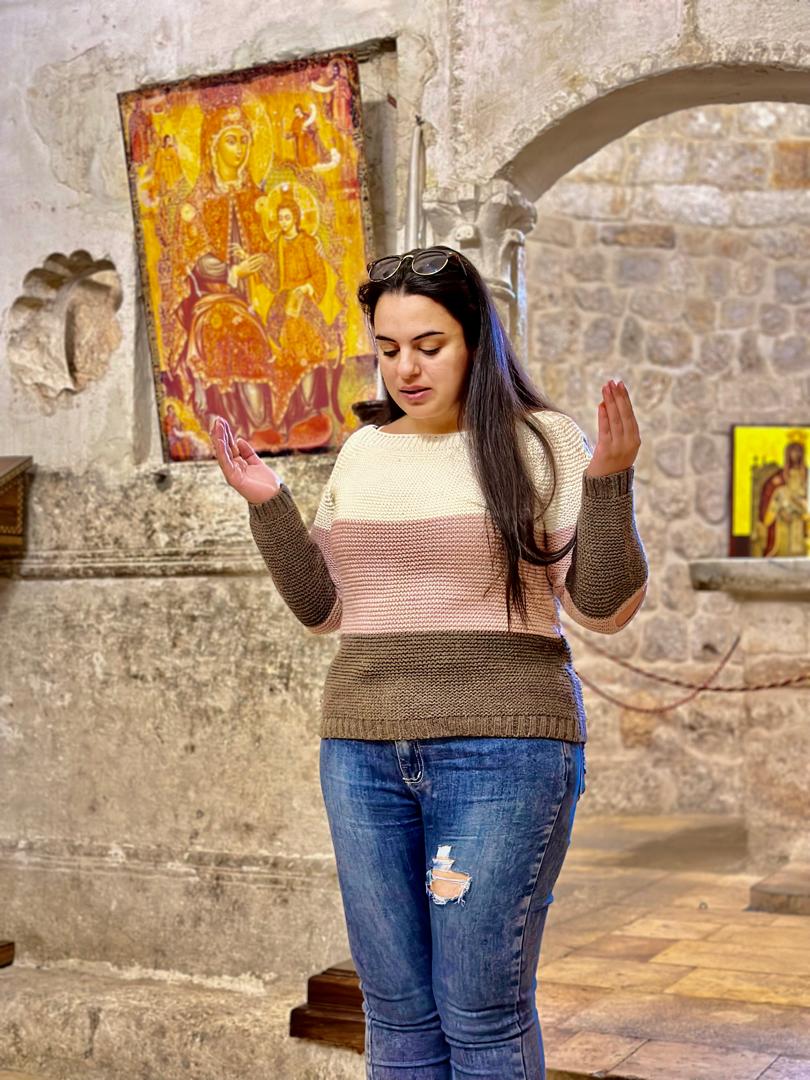
Home to Ancient Christian Monasteries
Maaloula is also home to two significant Christian monasteries: the St. Thecla Monastery and the Sts. Sergius and Bacchus Monastery. The St. Thecla Monastery is thought to house the tomb of St. Thecla, a legendary disciple of St. Paul. Visitors to this site are not just exploring a place of worship; they are walking through history, experiencing the same places that have been spiritual havens for centuries.
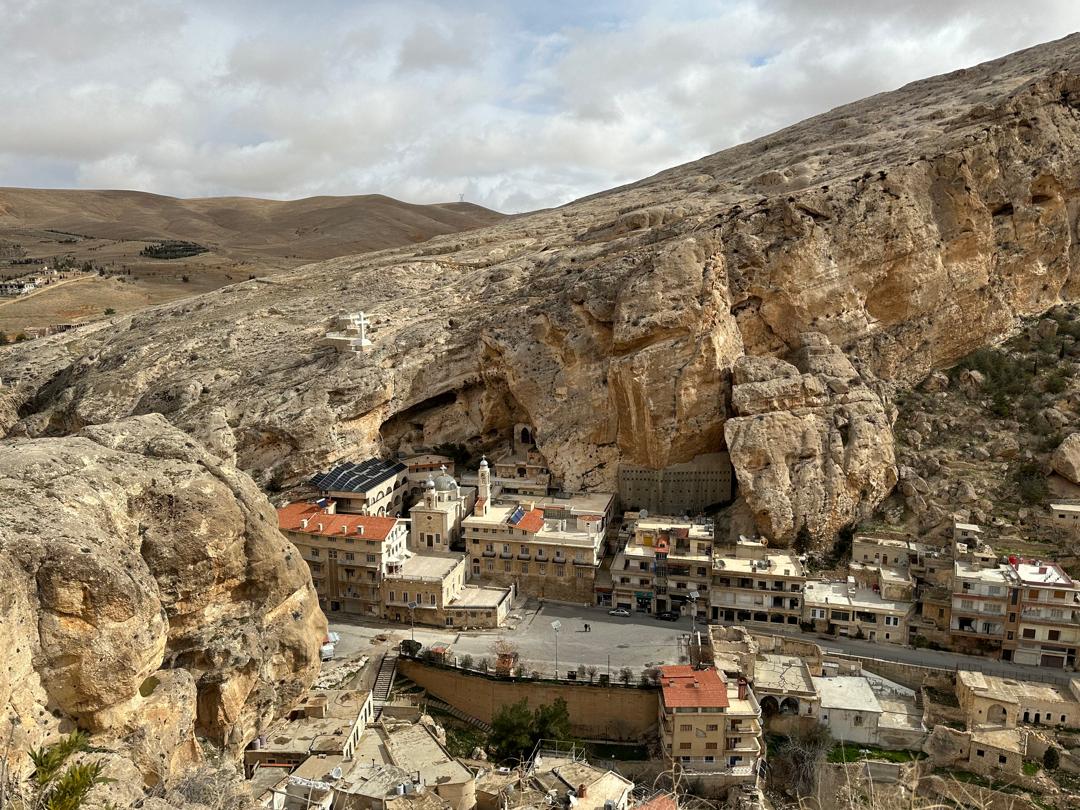
Dramatic Mountain Setting
Maaloula is stunningly set in the rugged cliffs of the Qalamoun Mountains. The village is built into the mountainside, with houses seemingly stacked on top of one another. The dramatic landscape adds to the village’s mystique, and its name—meaning “entrance” in Aramaic—may refer to the narrow mountain passage that leads into the village, which has played a vital role in its isolation and preservation.
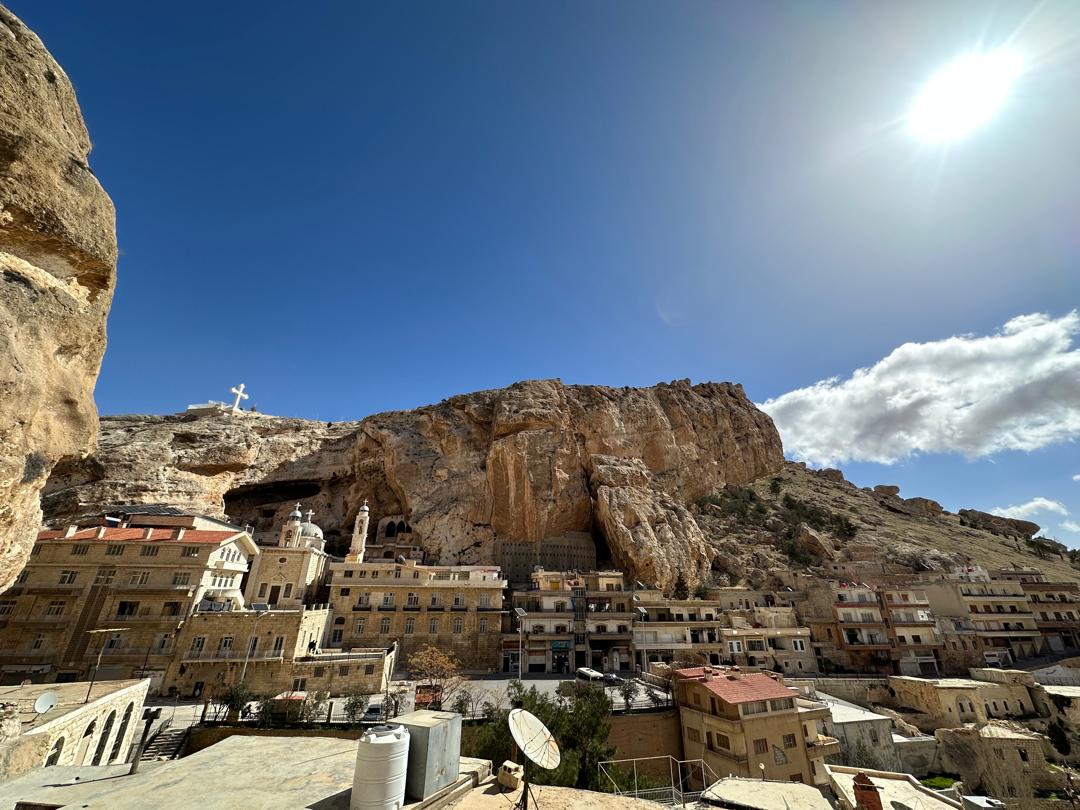
The Sacred Rock-Cut Passage of St. Thecla
For those who seek a connection to legend, the Sacred Rock-Cut Passage of St. Thecla is a must-see. According to local tradition, St. Thecla escaped persecution miraculously when the mountain split open, creating a narrow passage. This passage is still visible and accessible, offering visitors a chance to walk in the footsteps of one of Christianity’s earliest saints.
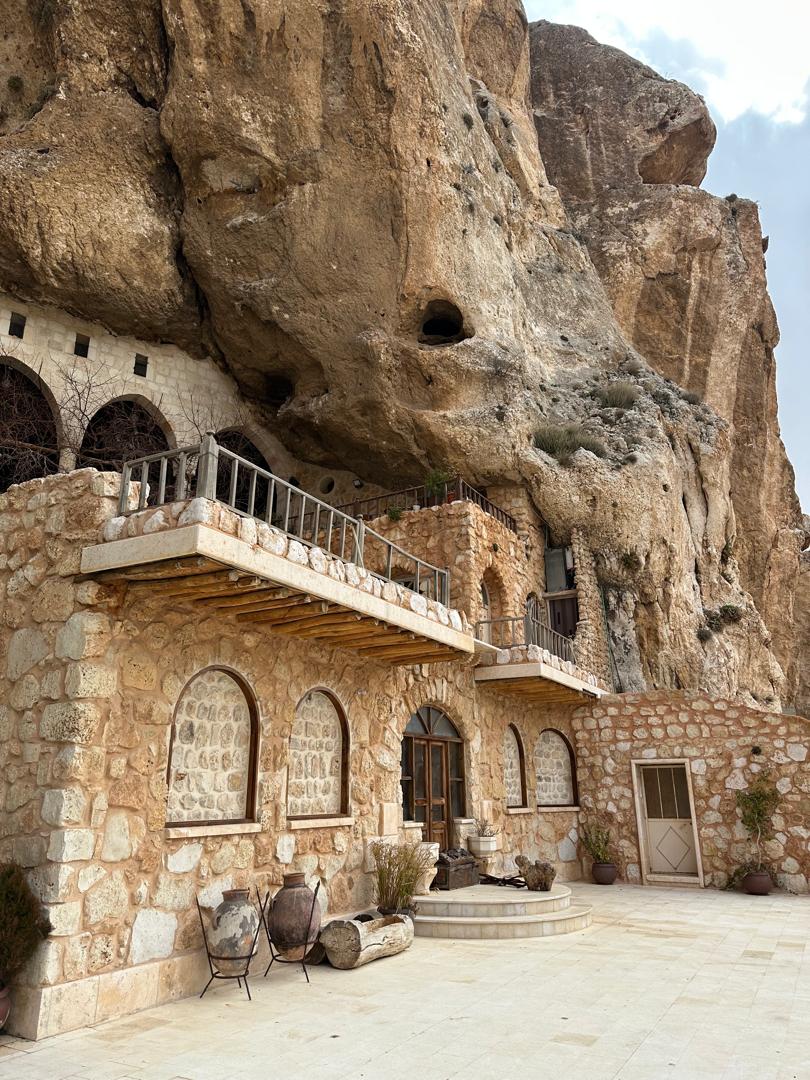
A Blend of Christian and Muslim Traditions
Maaloula is not just a Christian village—it is also home to a Muslim community. The village’s unique blend of both Christian and Muslim traditions creates a rich cultural tapestry that is reflected in local festivals, daily life, and the mutual respect between the two communities. Maaloula’s harmonious coexistence serves as a shining example of interfaith unity.
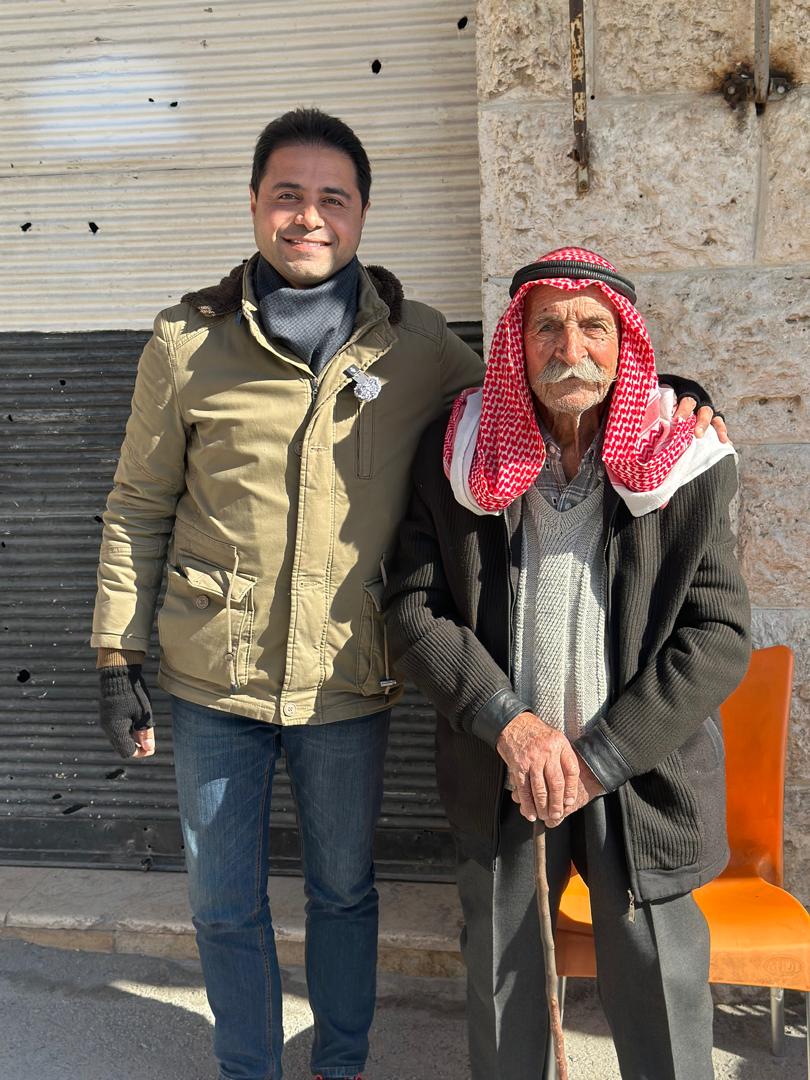
Traditional Maalouli Architecture
The architecture of Maaloula is as unique as its history. The houses are built in a distinctive stepped style, painted in shades of light blue and white, and many feature ancient stone foundations. These traditional homes give the village a charming, picturesque look, perfectly complementing its stunning natural surroundings.
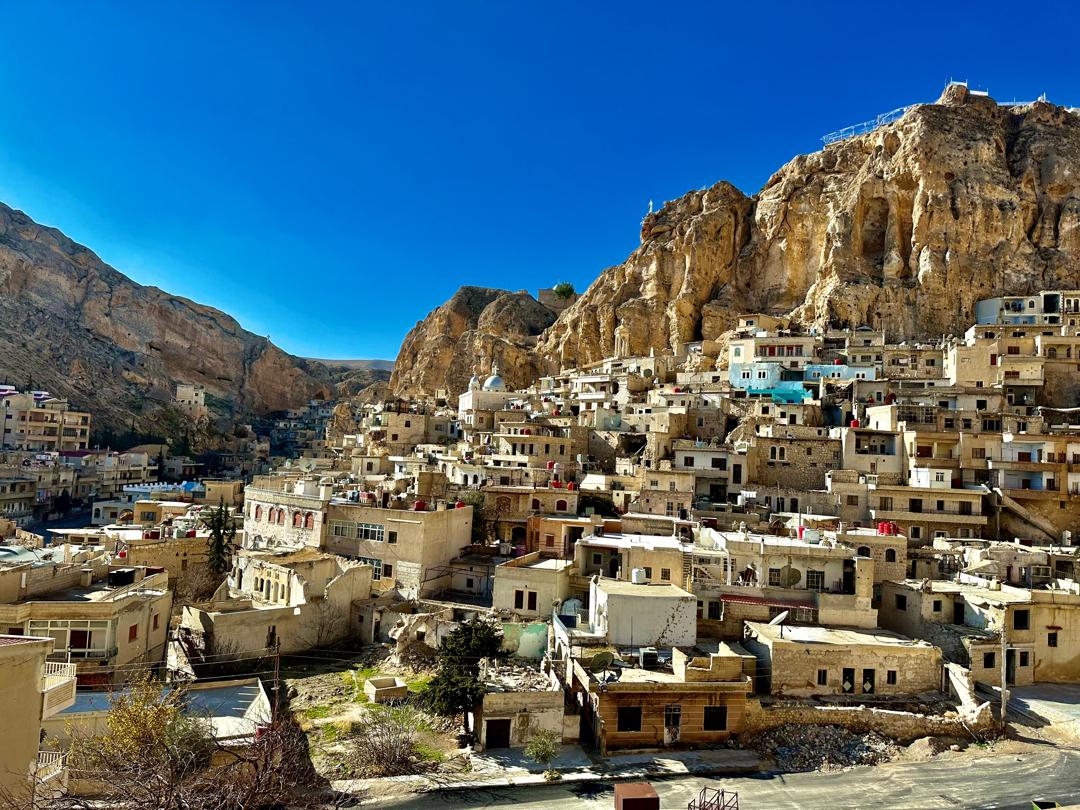
Festivals and Religious Celebrations
Maaloula is home to some of Syria’s most important religious festivals. One such event is the Feast of the Holy Cross in September, when bonfires are lit atop the surrounding mountains. This ancient tradition not only celebrates Christianity in Maaloula but also strengthens the bond between the community and its rich cultural heritage.
Join our September Group Tour to enjoy the Holy Cross Day Festival.
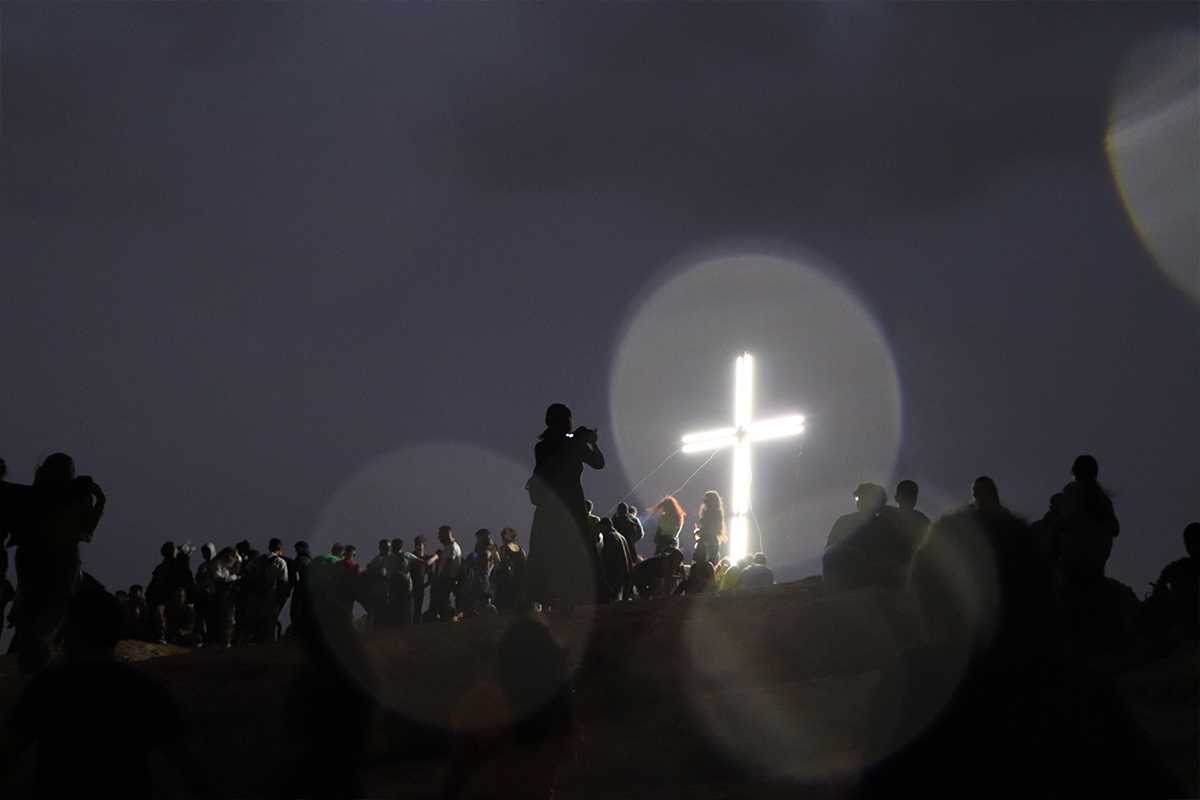
Historical and Religious Resilience
Maaloula has faced challenges, particularly in the wake of recent conflicts, but the community remains dedicated to preserving its heritage. Many of the historical and religious sites in the village, including the monasteries, have been actively restored. The villagers’ commitment to protecting their traditions and faith is a testament to their resilience and determination.
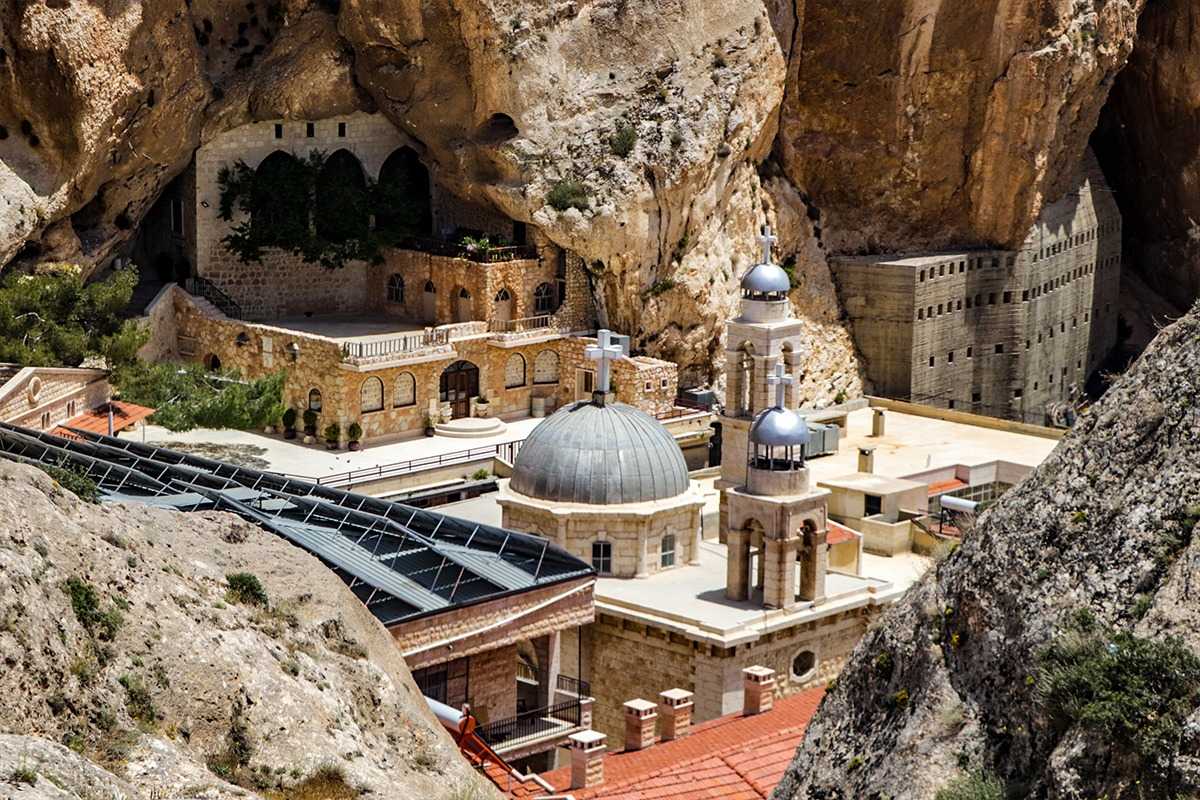
Cave Dwellings and Ancient Tombs
The cliffs surrounding Maaloula are not just a stunning backdrop—they are also home to ancient cave dwellings and tombs carved directly into the rock. These caves were once inhabited by monks and hermits seeking solitude and spiritual reflection. Exploring these caves offers a glimpse into the region’s long history of religious devotion and monastic life.
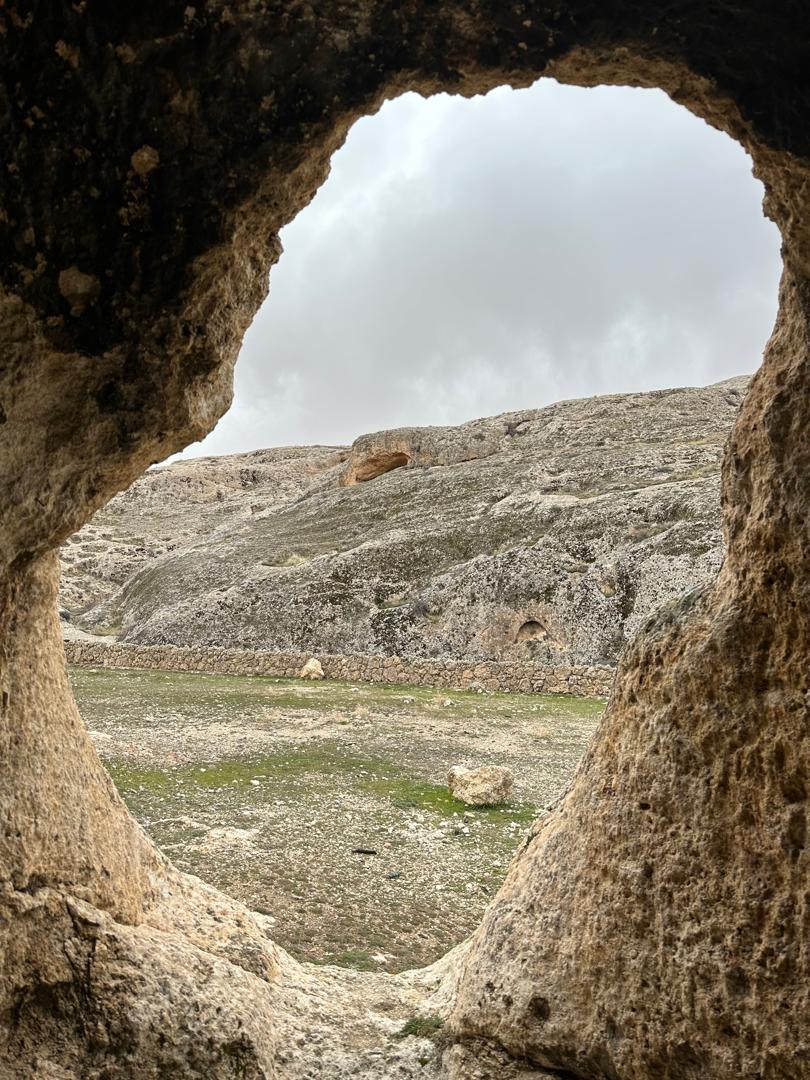
A Popular Pilgrimage and Tourist Destination
Today, Maaloula attracts both pilgrims and tourists from around the world. People come to experience its spiritual atmosphere, visit its ancient monasteries, and immerse themselves in the unique culture of this remote village. Whether you’re interested in its history, its faith, or its breathtaking natural beauty, Maaloula offers something for everyone.
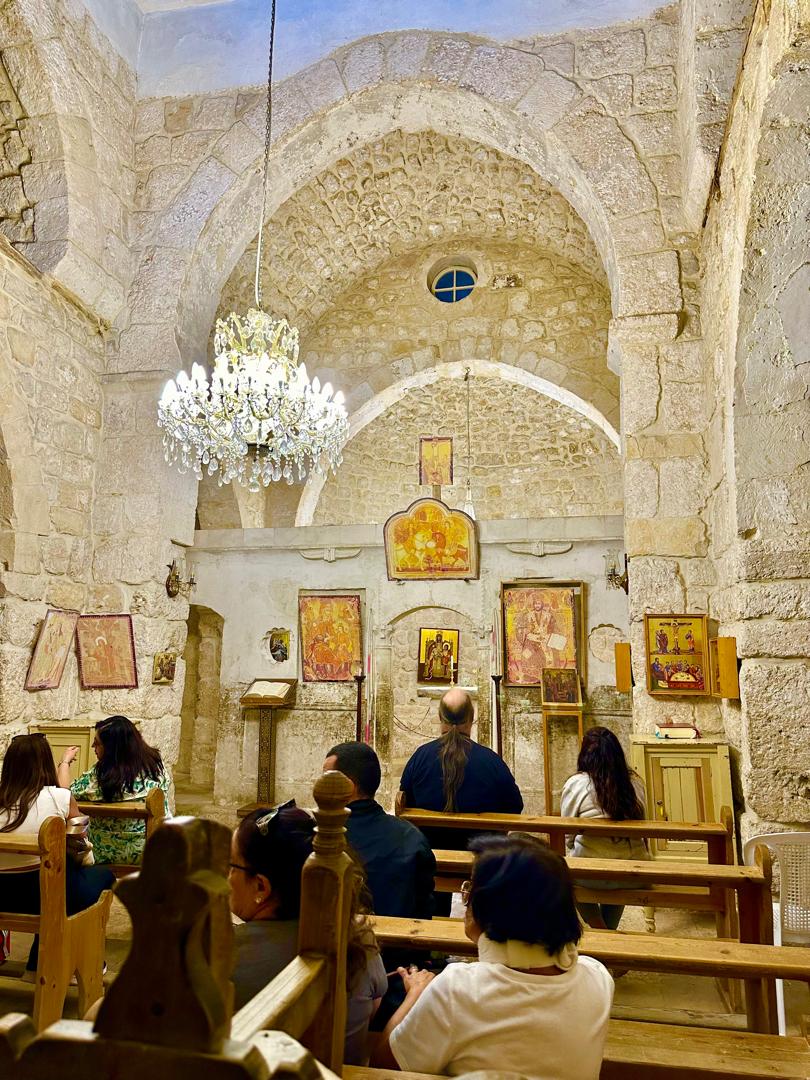
The Struggle to Preserve Aramaic and Christianity
Despite its historical and spiritual importance, Maaloula faces significant challenges. The younger generation is increasingly leaving the village in search of better opportunities in the cities, and as a result, Aramaic is spoken less frequently. However, Maaloula remains a living testimony to the survival of both the language and the Christian faith. Through active preservation efforts, the villagers continue to uphold their heritage, ensuring that future generations will experience the village’s unique culture and traditions.
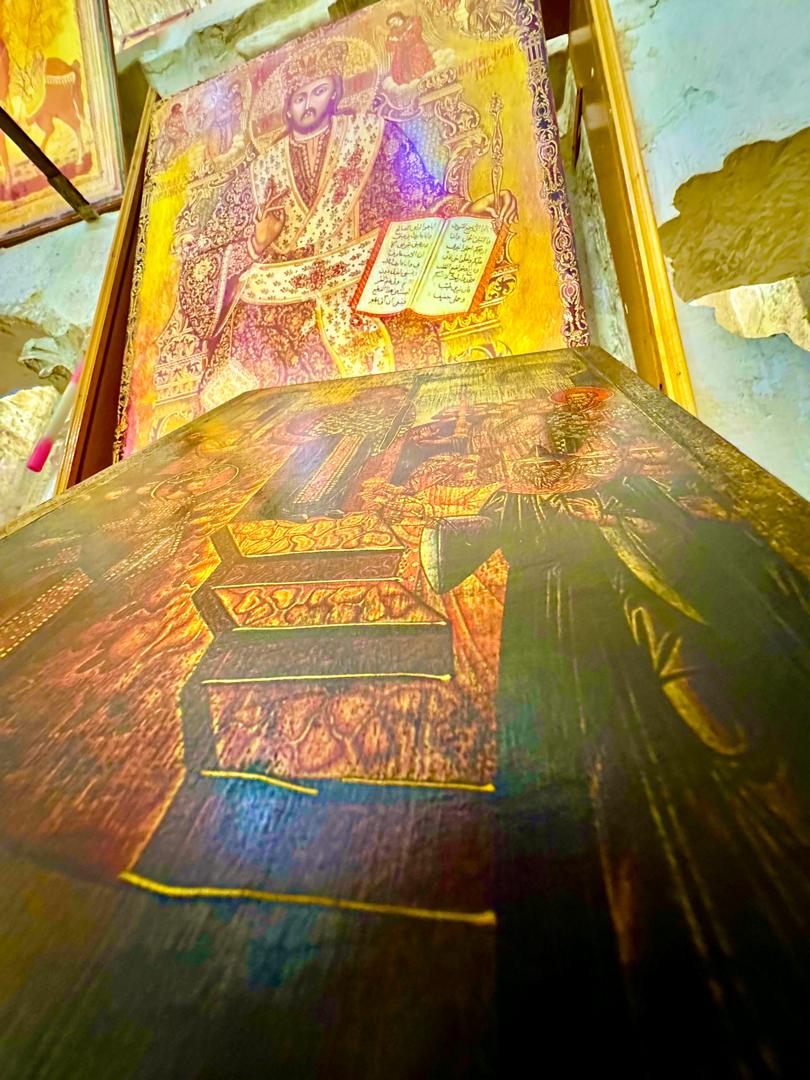
Why You Should Visit Maaloula
Maaloula is more than just a destination—it’s a journey back in time. From the ancient Aramaic language to the historic monasteries and stunning landscapes, the village offers a one-of-a-kind experience. If you are passionate about history, culture, and faith, Maaloula is a must-visit location that will leave you with lasting memories.
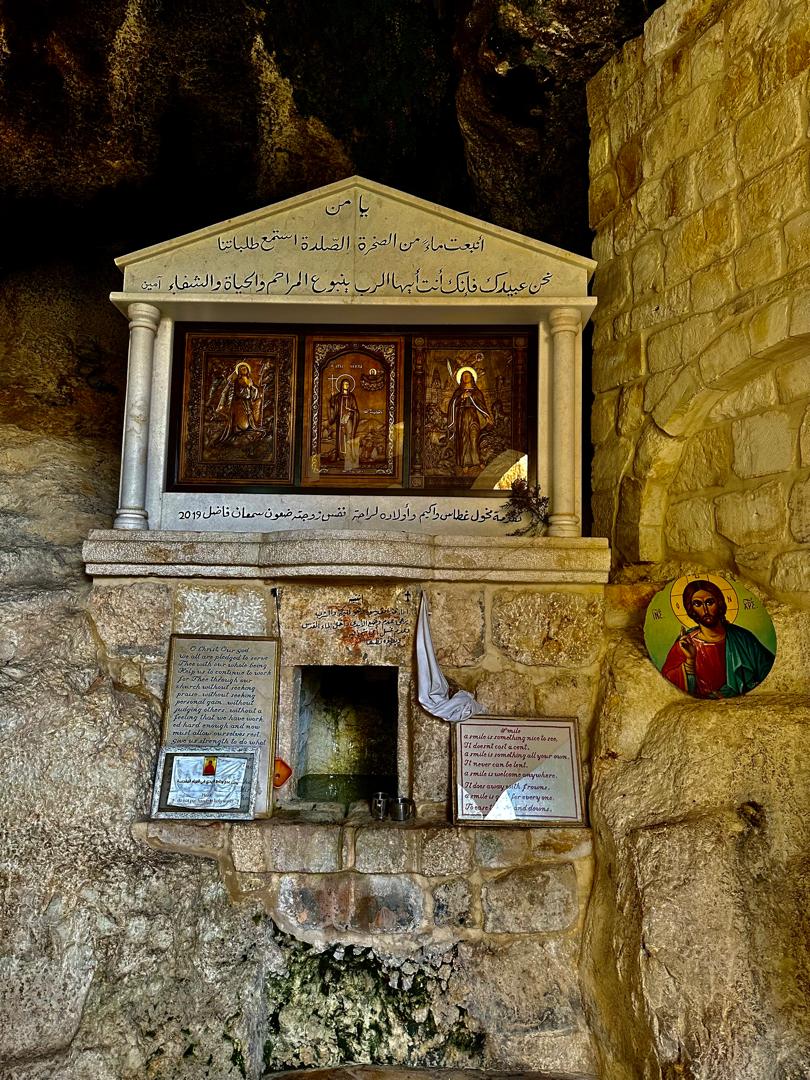
Add Maaloula to Your Travel Itinerary
Whether you’re planning a trip to Syria or looking for unique pilgrimage destinations, Maaloula should be on your list. Its rich heritage, stunning views, and spiritual significance make it a truly unforgettable place to visit. Want to explore Maaloula as part of a guided tour? Consider adding it to one of our exclusive tours and experience the magic of Maaloula firsthand.
